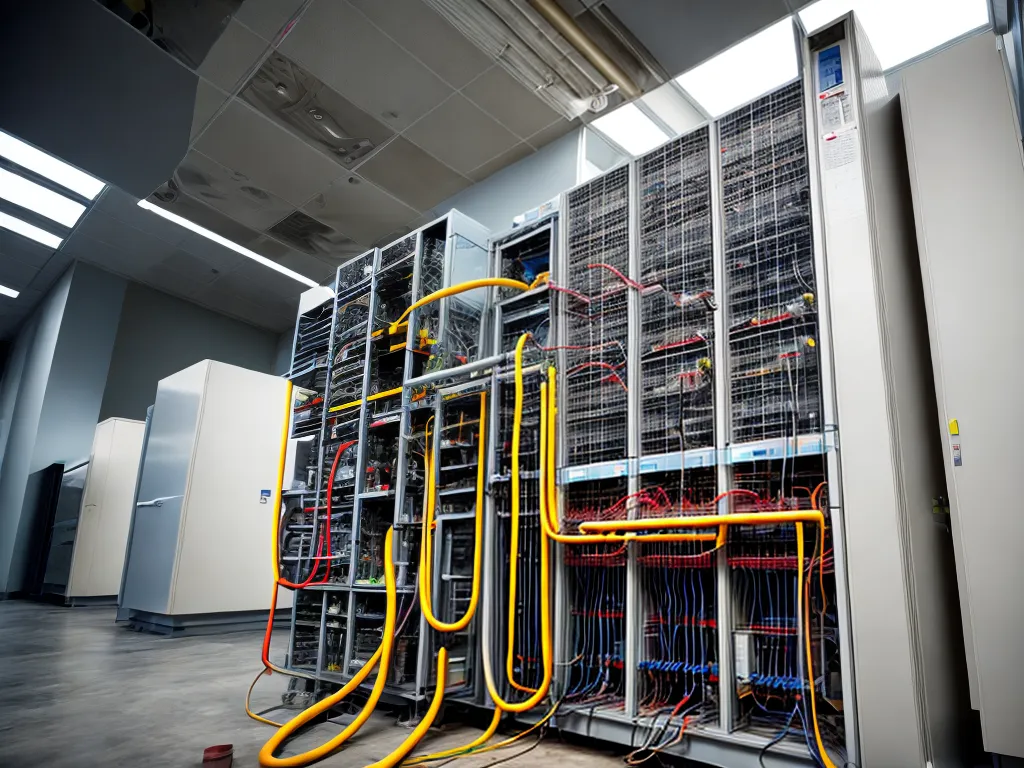
Introduction
As the owner of a commercial building, keeping the electrical systems up and running is crucial for operations and safety. Unplanned downtime can lead to lost revenue, dissatisfied tenants, and potentially dangerous situations if power is disrupted. That's why implementing a rigorous preventive maintenance program for all commercial electrical equipment is so important.
In this comprehensive guide, I'll cover key aspects of optimizing reliability through preventive maintenance on commercial electrical systems. Topics include:
Overview of Preventive Maintenance
Preventive maintenance involves proactively servicing equipment on a regular schedule to prevent failures and extend lifespan. For electrical systems, this includes:
- Inspections - Thoroughly checking components for damage, wear and tear, corrosion etc.
- Testing - Validating that equipment is functioning properly and safely.
- Cleaning - Removing dirt and debris to prevent clogs or overheating.
- Lubrication - Ensuring moving parts are properly oiled/greased.
- Adjustments - Re-calibrating equipment for optimal performance.
- Parts replacement - Swapping out worn components before they fail.
The key benefits of preventive maintenance include:
- Maximized uptime - Equipment lasts longer and experiences fewer unexpected outages.
- Improved safety - Identifying and fixing defects prevents hazardous electrical situations.
- Cost savings - Replacement costs are lower and major repairs needed less often.
- Extended system lifespan - Regular care makes components remain functional for longer.
Critical Electrical Equipment to Maintain
The most important electrical equipment to maintain includes:
Electrical Panels
The main electrical panels distribute power from the utility lines throughout the building. Preventive maintenance steps include:
- Inspecting wires for damage or overheating signs.
- Testing circuits to ensure proper voltages.
- Checking breakers and resetting their connections.
- Cleaning dust and debris from panel interior.
- Lubricating any moving components.
- Tightening connections to prevent loose wires.
Regular panel maintenance prevents power fluctuations and electrical fires.
Transformers
Transformers regulate the incoming voltage from transmission lines. Maintenance includes:
- Inspecting for leaks, cracks, overheating.
- Testing output voltage and amperage draw.
- Changing oil and filters to prevent contamination.
- Checking connections to ensure there is no vibration or noise.
This allows transformers to operate safely at optimal efficiency.
Generators
Backup generators provide emergency power when utility sources fail. Maintenance involves:
- Inspecting batteries and fuel/oil levels.
- Testing automatic startup and shutdown.
- Changing oil, fuel filters, and air filters.
- Checking all fluid levels.
- Running under load to ensure proper operation.
Routine generator maintenance prevents failure during outages when they're needed most.
Electrical Motors
Motors power HVAC systems, elevators, pumps and heavy machinery. Maintenance includes:
- Cleaning away debris and ventilation openings.
- Testing amperage draw and detecting abnormalities.
- Lubricating bearings and other moving parts.
- Checking wiring insulation for deterioration.
- Aligning shafts and couplings.
This keeps motors running smoothly and avoiding disruptive mid-day outages.
Creating a Preventive Maintenance Schedule
To optimize electrical equipment reliability, maintenance must be proactive and routine. Key steps include:
Inventory All Equipment
Catalog all electrical components, including:
- Location
- Nameplate data
- Size and capacity
- Manufacturer maintenance guidelines
This allows tailoring maintenance for each device.
Set Servicing Intervals
Determine how often equipment should be serviced based on:
- Manufacturer recommendations - Follow their maintenance schedule.
- Criticality - Prioritize vital systems like generators and panels.
- Failure history - Give problem devices more frequent care.
- Operating conditions - Adjust for environmental factors like heat or dirt exposure.
Frequent maintenance for unreliable or critical equipment reduces downtime risk.
Create Checklists
Make checklists detailing what tasks technicians must perform during each maintenance session, such as:
- Visual inspections
- Safety tests
- Parameter measurement
- Filter/fluid changes
- Wearable part replacement
- Cleaning steps
- Lubrication schedule
Checklists ensure no steps are missed and standardize procedures.
Schedule Appointments
Calendar maintenance sessions for each device based on defined intervals to create a routine. Coordinate electricians being on-site.
Scheduling prevents service being overlooked until problems arise.
Leveraging Technology for Preventive Maintenance
Advanced tools can streamline maintenance and provide performance insights including:
CMMS Software
Computerized Maintenance Management Software centralizes equipment data and schedules maintenance automatically based on prescribed intervals. This prevents anything from slipping through the cracks.
Remote Monitoring
Sensors can provide real-time data on equipment operation and diagnose problems before failure occurs. This enables truly predictive maintenance.
Mobile Apps
Mobile apps give technicians digital checklists and can track completed maintenance for verification and analytics. This provides oversight and work order management.
QR Code Tagging
Scannable QR code tags on equipment provide technicians immediate access to past maintenance records, procedures, manuals, and schematics. This makes service more efficient and effective.
Key Takeaways
Preventive maintenance is essential for optimizing commercial electrical reliability and safety. Key points include:
- Schedule proactive maintenance based on criticality and manufacturer guidance
- Create maintenance checklists for technicians to standardize work
- Inspect, test, clean, lubricate, and adjust electrical equipment
- Leverage CMMS, monitoring, mobile apps, and QR tagging for efficiency
Prioritizing preventive maintenance reduces costly outages and provides peace of mind through improved electrical safety. Protect your investment and avoid risk with a comprehensive maintenance plan.